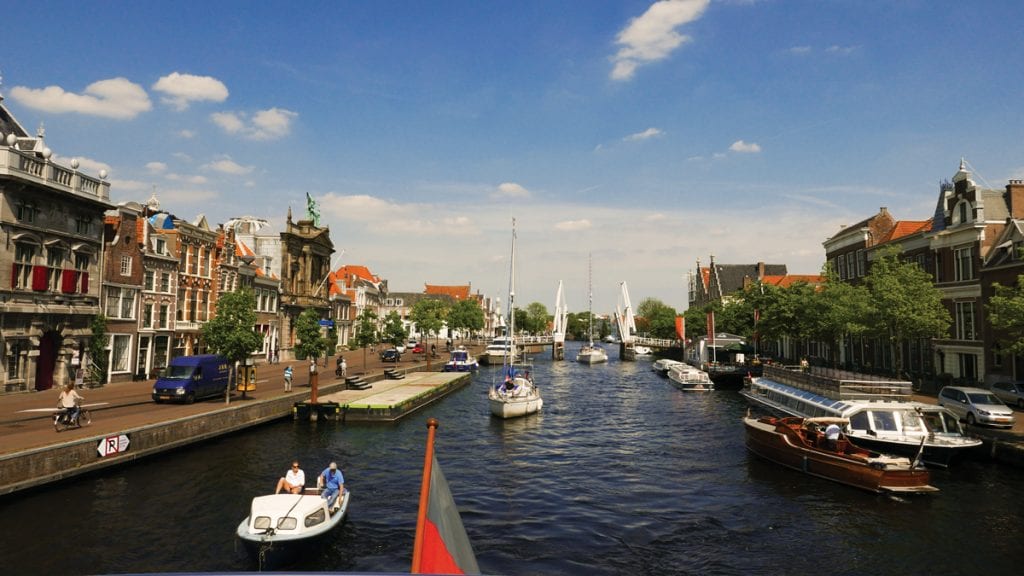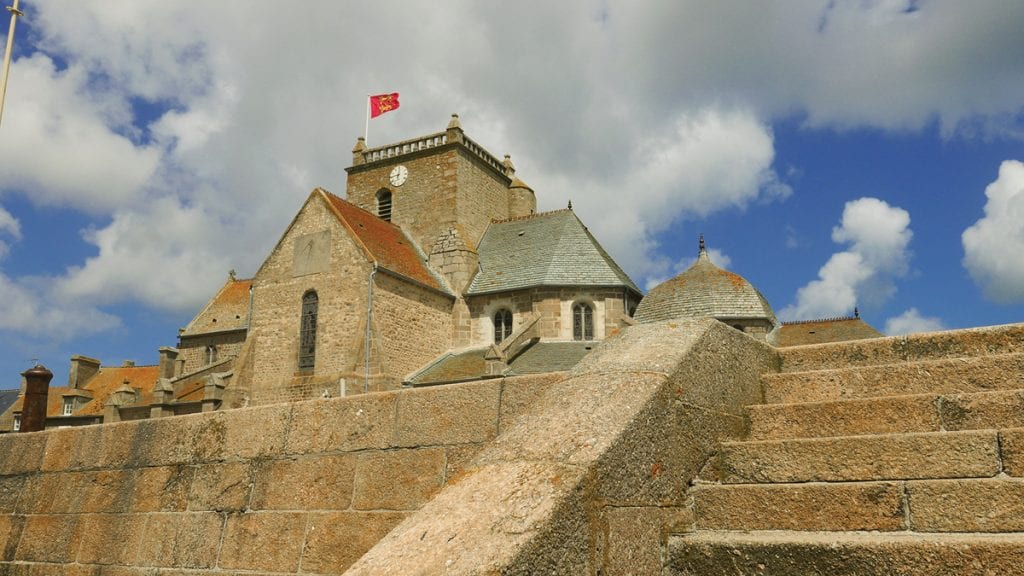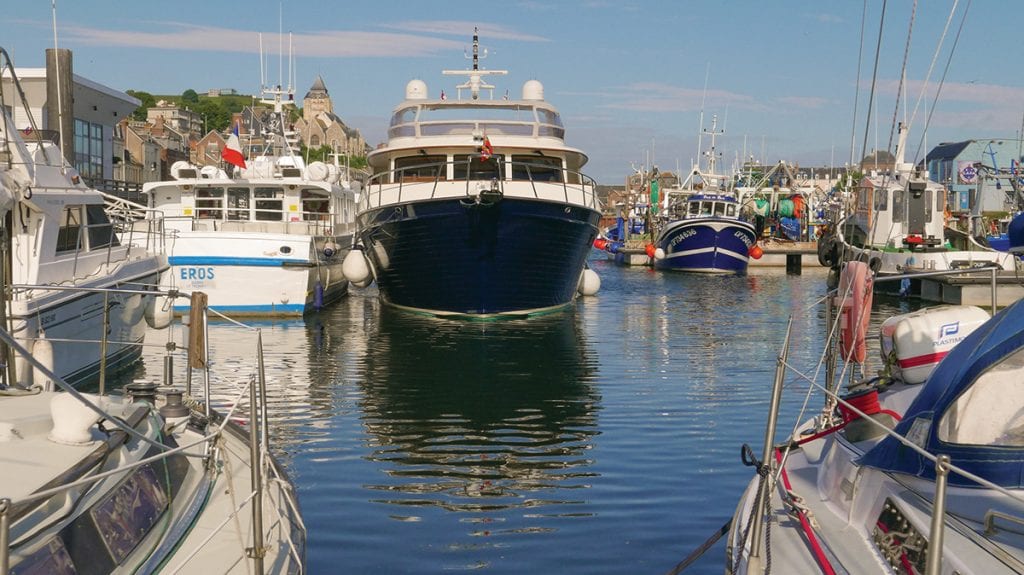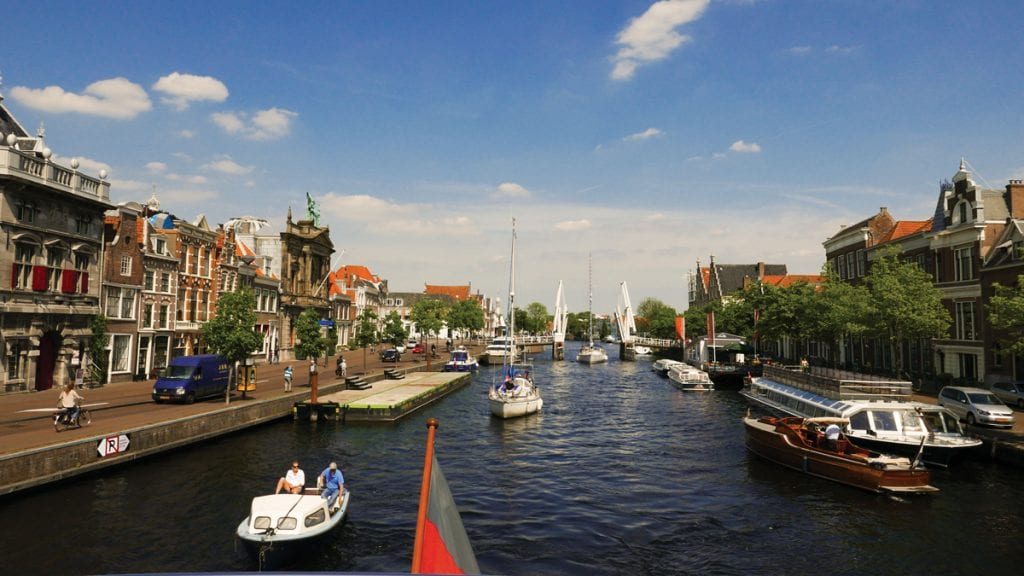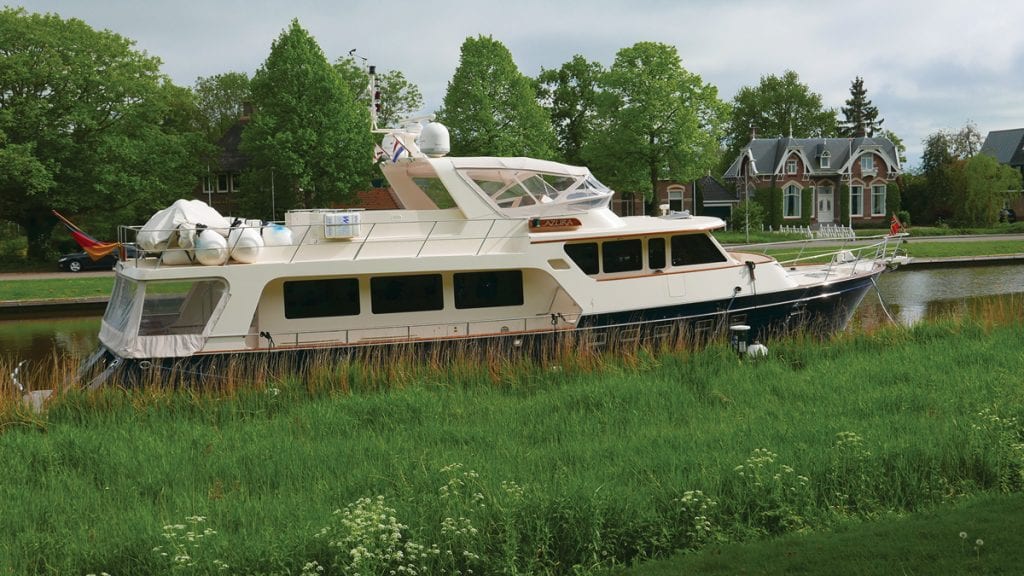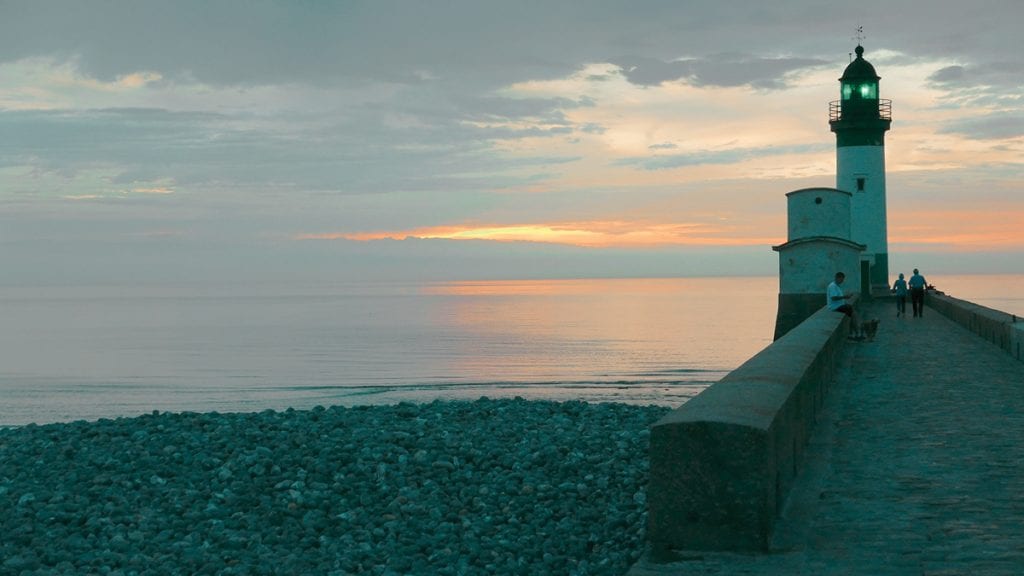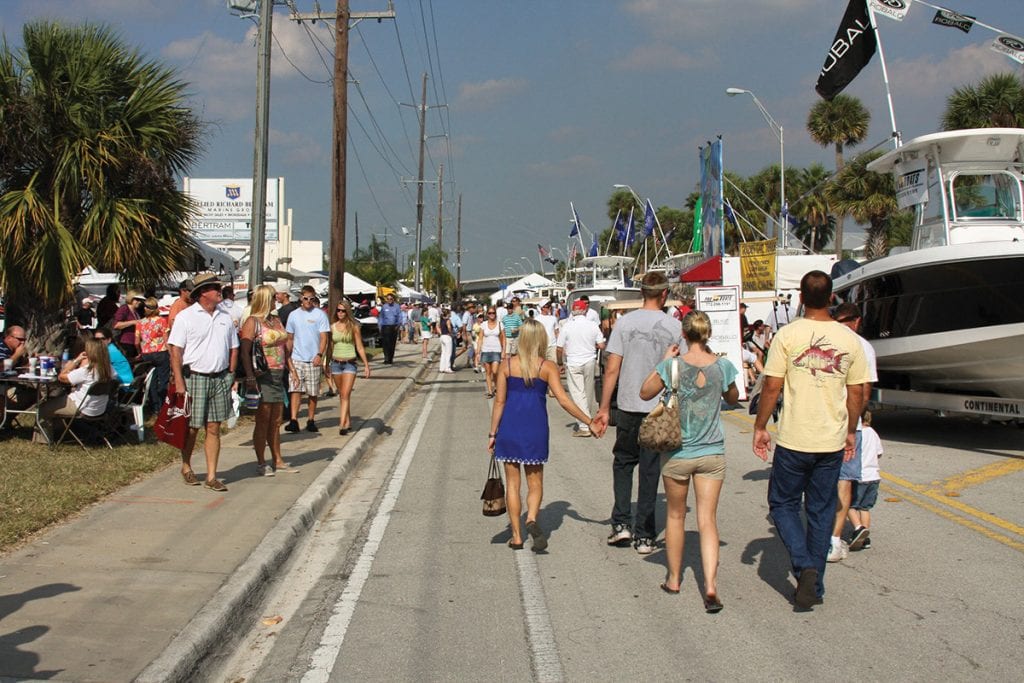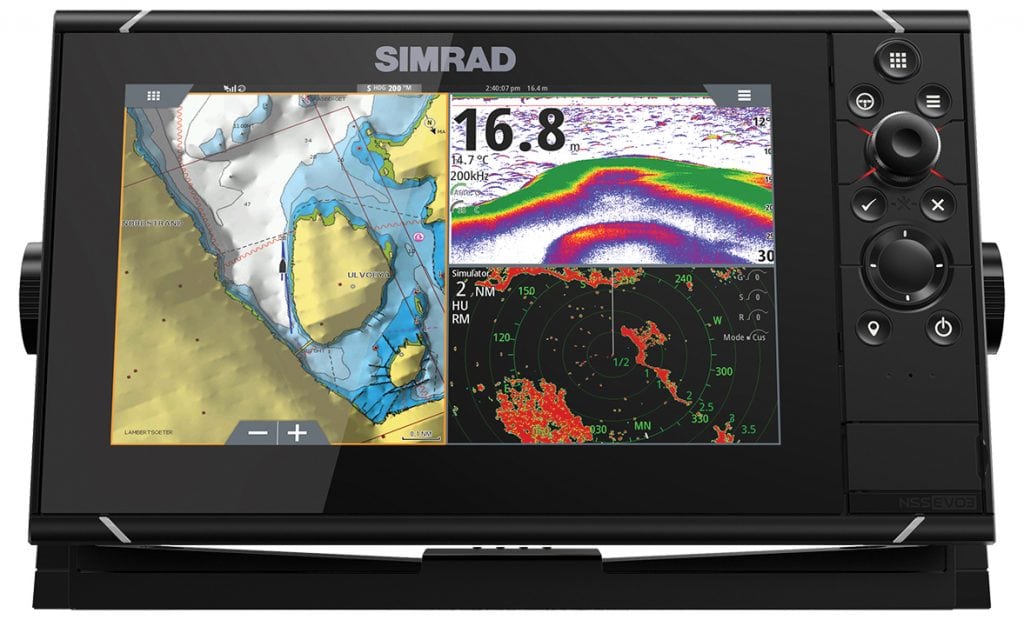Thomas Kittel retires from a successful executive career and with his wife, Jutta, he embarks on a series of cruising adventures that most would not have the courage to consider. Here is his travel diary cruising through Europe.
With a flying start, we set out on our Marlow 72E Azura for our fourth major voyage and leave Rostock, Germany, on May 12, 2017. A strong easterly wind pushes us through the Fehmarn Sound to Kiel where German customs show that they are still attentive and pay us a visit. Even though the check is routine, they wear bullet-proof vests and one person must stay on the dock. After checking our papers, their main interest is our 13,000-liter fuel tank. Some boat owners use tax-saving sources because of the high fuel prices, but we employ no such means and have nothing to fear. They are satisfied by the email exchange from the fuel supplier. With that, we’re on our way to begin cruising through Europe.
The locks and motoring through the Kiel Canal are routine for us, and we stay in the familiar Cuxhaven SVC Marina. One morning, however, I learn that too much routine can have its downsides. When backing out from the yacht harbor, I turn in a little too early and ram a lightweight floating dock. Luckily, only our hull’s paint and gelcoat are damaged, but the floating dock is heavily bent. We immediately dock at the nearby diesel filling station and then, of course, the whole communication goes off with the port, the water police, and my insurance. Finally, everyone has what they need, and we’re back on our way.
Safety First
Misfortune, however, is seldom alone and shortly after leaving Cuxhaven, dense fog envelops us. Sailors without an automatic identification system (AIS) are only visible as a small, colored point on the radar screen and I’m forced to dodge them. After some tense moments, the fog clears and the day becomes glorious with sun and little wind as we travel along the East Frisian Islands to Norderney.
To continue on through the Netherlands, we opt to cruise inside on De Staande Mastroute because it allows the vertical clearance we need and avoids the North Sea. We already know a large part of the route, but it is always fun to steer our large “steamer” through the pretty Holland countryside with its narrow canals and bridges.
We stop over in Dokkum and get to know this picturesque “dollhouse” with distinctive windmills. As we travel through Lemmer, Amsterdam, Haarlem, and Dordrecht, Willemstad is one of the highlights on the Dutch section of our trip. Here, we manage to get a place in the old, small town port without a reservation. This harbor, built into the former citadel, offers a very rare photo opportunity, but you’ll have to accept the tourist crowds because Willemstad is an attractive tourist destination.
Our visit here the previous year was filled with annoyance and unplanned detours from blocked bridges, but everything goes smoothly. We reach Zeebrugge, Belgium, as planned, where we take our first guest on board and leave behind the familiar waterways. Dunkerque is our first French seaport and a significant rite of passage. It’s where our watersports activities began 20 years prior with a motorboat we chartered in Pontailler-sur-Saône (Burgundy) without the slightest clue about boating.
From the sea, Dunkerque is not exactly inviting. Immediately at the entrance to the harbor, huge industrial buildings with smoking chimneys form the reception committee. We decide for the marina closer to the center and are rewarded by two female harbormasters who are friendly, professional and create space for us on the jetty. However, there is no real French “feeling” here. Much appears to be outdated, many places are empty and deserted, and the sailboat next to us is sprinkled liberally with verdigris and doesn’t help the atmosphere. It’s the same with Boulogne-sur-Mer, despite the very well-preserved old town built on a hill.
Lock it up
But then comes Le Tréport. Some courage is needed to enter the small fishing port and marina, which can only be reached at high tide by a barely sufficient lock. You have to rely on the harbormaster for possible free berths because on your own, you see nothing from the lock. In the lock, we get a pontoon number assigned and sneak through the ever-narrowing port to discover that the designated space is occupied. We tie up provisionally alongside the tour boat Eros, but with no other alternatives, we remain there albeit with no electricity, no water, and a small climb through the tour boat to get ashore.
Le Tréport is located at the mouth of the Bresle River and the coast’s more than 100-meter-high chalk cliffs strongly remind us of the English coast, which was probably the reason for Queen Victoria’s two visits. You can climb the 370-plus steps or ascend the cliffs with an inclined lift hewn into the rocks. At the top, your reward is a breathtaking view of the sea, the village of Le Tréport and Mers-les-Bains across the river.
Here, the undisputed star is the 1844-built lighthouse that stands on the top of the western pier to the harbor entrance. Even at high tide, it rises impressively, but at low tide, it unfolds an even greater impact. Up to 10 meters of water has disappeared, and the fairway to the port is completely empty. The piers projecting out of the sand now look like huge castle walls on which the lighthouse towers like a keep.
There’s an additional building that houses a large bell and several giant fog horns. It’s easy to imagine which hellish spectacle prevails here in fog. I feel reminiscent of the ill-conceived fog horn in Long Day’s Journey into Night by Eugene O’Neill, which I recently saw in Hamburg. But unlike the play, the weather is peaceful. Evening walkers populate the pier to the lighthouse, whose romantic flair no one can escape, and a short-term cloud hole offers a near completely calm sea. The air is like velvet and silk, a moody atmosphere for our photography.
Memories
Before we leave Le Tréport the next day, the wind suddenly turns and increases in strength. We have only two hours to Dieppe before us, but for the first time on this tour, things get a bit bumpy. Luckily, we stowed the fenders and lines in port beforehand. Dieppe welcomes us with a large, well-protected marina in the city center. Here we rent a car for the first time and drive to Amiens, the departmental capital of Picardy, with which I connect many memories from my school days—first trip abroad, appearances with the school orchestra, accommodation with a French family, flirting with the daughter of the house.
Often the reality of today disappoints the glorified memories of yesterday, but here it’s the other way around. The grey Amiens of my school days has become a charming city. The famous Cathédrale Notre Dame d’Amiens, one of the three great cathedrals of the High Gothic era, has the highest nave of all French cathedrals and served as a structural model for the Cologne Cathedral. The cathedral overlooks a pretty, old town where the Somme River’s side arms and canals create an almost Venetian flair.
Where the Somme enters into the sea lies the Baie de la Somme, which is dry at low tide and offers refuge for more than 300 species of birds. Le Crotoy, Saint-Valerie-sur- Somme and Cayeux-sur-Mer connect via a wonderful steam train. Somehow, despite their attractiveness, they have not succumbed tourist traps. Here, we feel France from its most beautiful side and enjoy again the fresh moules-frites (mussels and fries).
Change of Plans
The tide is unfavorable for cruising to Fécamp and Honfleur, so we opt for the always approachable Le Havre. Because the marina is so big, we’re almost alone. The sea is close to our outdoor pontoon, so the waves of the passing ships rock us to sleep.
We pick up our rental car and drive to the Rouen Cathedral, which owes its fame, not least of all, to the 33 paintings comprising Claude Monet’s series of pictures created in different lighting conditions from 1892 to 1894, a highlight in Monet’s oeuvre. We encounter paintings at every turn because, in many places in Normandy, there lived poor, now world-famous painters. Often, their pictures are informational signposts. This helps you see the artist’s perspective.
We next voyage to St.Vaast-la-Hougue and reach the lively harbor just as the gates open. There is still room at the visitor pontoon, and various English flags indicate that the eastern tip of the Cotentin peninsula is very popular with the British.
We leave St.Vaast the next morning. The weather is wonderful. We head for Cherbourg before the weather turns. At Marina Port de Chantereyne, our scheduled berth was occupied by its owner that evening. But the harbor officials make up for their oversight with a much better berth next to the harbor office. The city is just a short walk away.
Croatia Awaits
Cherbourg is located at the northern end of the Cotentin peninsula. It’s the second-closest connection to England after Calais and where the World War II D-Day Normandy landings took place; Utah Beach is not far away. The fortifications of the Atlantic Wall on the huge flat sandy beaches are still present today, and many museums and events are reminiscent of historical events.
We’re here on the 73rd anniversary of the landing, and there’s a little celebration in Quinéville with military music, and historic military vehicles, tanks and uniforms—most under the American flag. Two speeches in French and English recall the events of yesteryear but also reference the threat posed by today’s terrorism. The German flies and we hear the national anthem and Beethoven’s Ode to Joy. Anyone expecting a one-sided celebration would be pleasantly surprised by the inclusivity. Before World War II, Cherbourg was the largest European gateway to the New World. The RMS Titanic stopped here before its fateful journey.
Despite the massive destruction in the World War II, a lot of history was preserved or restored. That includes the former nuclear submarine Le Redoutable, which could remain underwater for 70 days, was in service for 40 years and never fired any of its 16 atomic rockets.
Out at Cap de la Hague, the storm-ridden sea makes us happy to be safe in the harbor. Just south at Nez de Jobourg, we stop at the Auberge des Grottes and enjoy local specialties and spectacular views of the sea as far as the northernmost Channel Island, Alderney. After several days, the storm over the Atlantic begins to slow down, and we embark on the next great adventure: the Channel Islands.
By Thomas Kittel, Southern Boating
October 2018

